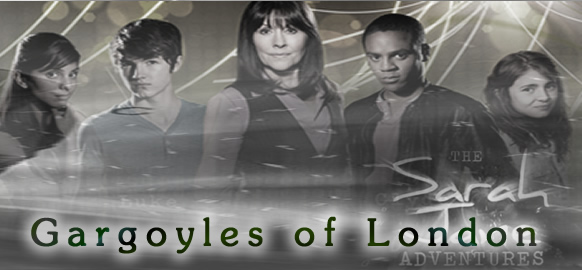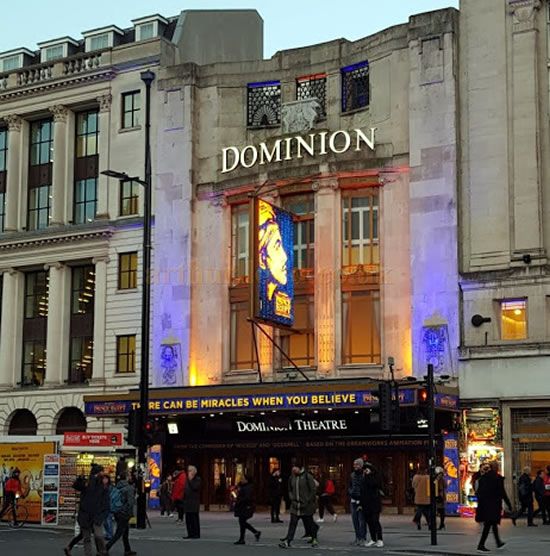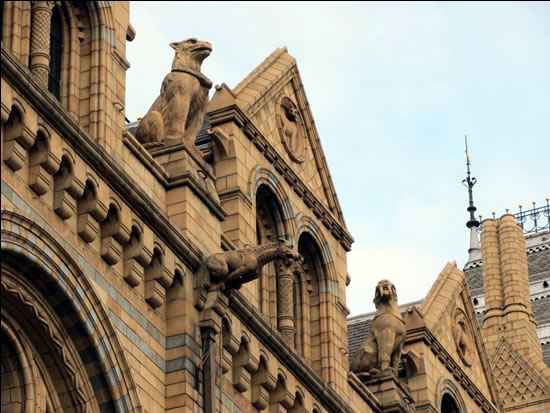

It was, officially, the wettest July for sixty years. There actually WERE records at the meteorological office to prove it. Rani Chandra was glad it wasn’t her job to go and find a way of writing a story about it. She had spent a far more interesting day at the British Museum where there had been a Press preview of a new exhibition celebrating bronze age Britain. Sky had come with her. She was already at a loose end in the school holidays and yearning for intellectual stimulation worthy of her alien manufactured and highly superior mind.
It had been very interesting. Rani had plenty of material for an article. Sky had expanded her knowledge of prehistory.
Walking back to the underground was a short but wet walk. Sky wondered aloud why they hadn’t come in Rani’s car.
“Because the only place I can park around here is FURTHER away than the underground station,” she answered. “Come on, we’ll get coffee and something to eat, first. There are a couple of nice places on Tottenham Court Road that aren’t too expensive for this part of the city.”
Sky was pleased with that idea. The low clouds cast a gloom over everything even though it was only coming up to five o’clock on what was, allegedly, a summer afternoon. Restaurants and coffee shops were warmly lit oases along the way to the tube station.
“What’s that noise?” Sky asked, looking around and then up at the corner of the Radisson Blue Edwardian Hotel. A gout of water sprayed into her face and she spluttered, wiped her already wet coat sleeve over her eyes and tried to see why she had been subjected to so much extra water.
“It’s a gargoyle,” Rani commented. ‘Look, up the wall, there. Ugly thing. Its pipe must be busted. It should channel the water into a downpipe, not on passers-by. That’s what made the noise, too. Gargoyle comes from a French word meaning ‘throat’. They ‘gargle’ the water in their throats as it goes down.”
“Not funny,” Sky shouted up to the twisted stone face fixed to the wall. But talking to architecture was silly. She followed Rani around the corner to an inviting looking café where they sat in a window seat and ordered food and drink while their clothes steamed gently.
“Funny thing,” Rani commented as they drank lattés and enjoyed toasted smoked cheese ciabatta sandwiches. “That hotel isn’t the sort of architecture you’d expect to see gargoyles. Usually its churches and old buildings… Gothic or Gothic revival at the least. The Radisson Blu Edwardian is…. Well, Edwardian. So are most of the buildings around here apart from a few modern blocks. It’s really not a gargoyle neighbourhood at all.”
“Perhaps somebody was being post-modernist,” Sky remarked. “Putting things in incongruous places to create effect. “Like the London Noses.”
Rani didn’t know many girls Sky’s age who would actually use the word ‘incongruous’ in conversation. Or ‘post-modernist’, either. Sky was unusual in that way.
“Could be,” she agreed. “The guy who did the noses all over Soho didn’t call himself post-modernist. He called it the Situationist Movement. In fact, he just had a grudge against CCTV cameras in the streets and wanted to make a protest.”
“Must be doing it with gargoyles, now,” Sky remarked. “Isn’t that one up there, as well.”
She pointed to the Portland Stone frontage of the Dominion Theatre across the road from the café. Much of the nineteen-twenties façade was covered in an illuminated fascia illustrating the current production, a musical about the life of Moses called Prince of Egypt.
Above the fascia and just below the neon ‘Dominion’ sign were what looked like a whole row of gargoyles glaring down at Tottenham Court Road.
“That’s weird,” Rani commented. “But this IS the West End. weirder things have gone on, here.”
That about settled the matter. They finished their snack and coffee and headed to the underground station. It was a twenty-five minute journey on the Central Line to Ealing and a few minutes more until they were home in Bannerman Road.
“It’s funny,” Rani said as they parted for their homes on either side of the road. “I think I’m seeing gargoyles everywhere. I could swear I saw one on the roof of your house.”
Sky looked, but she could see nothing but the chimneys that should be there.
“Definitely over imagination. Well, see you tomorrow. I’m going to pick Mr Smith’s computer brain for some background on the Bronze Age before I write up the article.”
It was still raining in the morning. Sky looked from her bed at the rivulets coming down past her window and the grey sky beyond. For most of May and June it had been delightful waking up, even on a school day, to bright yellow sunshine, but the first day of July had been grey and miserable and every day since had been the same.
She had to get up, even though the greyness made her want to hide her head under the duvet and go back to sleep. She washed and dressed and went down to the kitchen where breakfast awaited her.
Her mother was listening to the radio. The local news programme for London was describing a curious act of vandalism in the city centre overnight. Sky listened attentively as she heard the Dominion Theatre mentioned.
“What happened?” she asked.
“All the widows in the place were smashed… and the illuminated signs at the front. The police aren’t saying much, but a couple of politicians are speculating about it being anti-Semitism… because the show is about Moses.”
“Do you think it is As nasty as that?” Sky asked. London was as multicultural as any city could be, and mostly people agreed to live and let live. But tensions could boil up from time to time.
“I don’t know,” Sarah-Jane answered. “After all, it is just a musical. Why would it bother anyone that much? Besides, Joseph and the Amazing Technicolour Dreamcoat is about Jewish people, too, and nobody has attacked the London Palladium where that’s showing.”
“Funny, Rani and I were looking at that place yesterday when we were having coffee,” Sky noted. “The Dominion, I mean… not the Palladium. That’s a lot of glass. Didn’t anyone see who did it? There must be CCTV cameras around there. After all, it isn’t far from where that man put up all the noses because he didn’t like the cameras.”
“Noses?” Sarah-Jane looked at her daughter and wondered for a moment what noses had to do with it. “There must be cameras, of course. The police will sort it out.”
It was a mystery, but not her kind of mystery. Vandalism, even if it was motivated by hate, was not the sort of thing she had investigated even when she was a serious journalist, and in her days with The Doctor it wouldn’t even have been on her radar.
Rani breezed in through the kitchen door, wiped her feet and hung up her coat. Even crossing Bannerman Road had got her soaking wet.
“Coffee?” Sarah-Jane offered her as the girl from across the road sat down at the table. Sky launched into a repeat of the story about the Dominion Theatre’s overnight mishap.
“I wonder if I should do a report about it,” Rani thought aloud. “Especially if it does turn out to be antisemitic. That’s pretty serious.” She looked out of the kitchen window at the rain-soaked garden and shivered. “On second thoughts there are plenty of other people who could get themselves wet on a morning like this.”
“Now that’s not a very good attitude to journalism,” Sarah-Jane told her. “The things I did for a story at your age.”
“Like pretending to be your Aunt Lavinia to get into a secret military base along with real scientists?” Sky suggested.
“Exactly like that,” Sarah-Jane replied with a distant smile. “That started something. My first adventure with The Doctor. Of course, none of THAT got written up as a news story. I’d have been relegated to the Science Fiction comics.”
Sky and Rani both loved listening to Sarah-Jane’s reminiscences of life with the Doctor. That first trip, to medieval England and a clash with a Sontaran was one they regarded as ‘classic’. They had more coffee and toast and listened to it with pleasure before reluctantly admitting they all had things to do. Rani headed up to the attic to use Mr Smith’s superior database for her research. Sky brought her laptop to do a more mundane essay about Great Expectations while keeping her company. Sarah-Jane had an even more mundane task of putting up new curtains in the front drawing room, because even people who had once travelled in space and time had domestic chores.
Great Expectations just about contained Sky’s interest long enough to write the essay that was part of her summer studies. After checking the word count and adding a list of references, her thoughts wandered to what Rani was doing.
She couldn’t help noticing that the images on Mr Smith’s screen had little to do with the bronze age.
“I can’t help noticing that you’re NOT looking at stuff about bronze age Britain,” she said, pulling up a chair beside Rani.
“I did SOME of it,” she answered in her own defence. “But I was thinking about the Theatre… and gargoyles.”
“Gargoyles are not to be confused with ‘grotesques’, which were ghastly figures placed on medieval churches to warn a mostly illiterate public about the punishments for sin,” Mr Smith intoned as various pictures of stonework passed across the screen. “Gargoyles also fulfilled the practical purpose of channelling water away from the building.”
“Yeah… onto me,” Sky responded grimly.
“Mr Smith, what sort of myths or legends are there about gargoyles?” Rani asked. “Is there anything about them being ‘alive’ in any way?”
“The earliest such reference would be a French tale about St. Romaine - c. 631 – 641 AD, the former chancellor of the Merovingian king Clotaire II who was made bishop of Rouen. He delivered the city from a monster called Gargouille or Goji. La Gargouille is said to have been a dragon with bat-like wings, a long neck, and the ability to breathe fire from its mouth. St. Romaine subdued the creature with the help of a crucifix and the only volunteer, a condemned man. The monster was led back to Rouen and burned, but its head and neck would not burn due to being tempered by its own fire breath. The head was then mounted on the walls of the newly built church to scare off evil spirits. In commemoration of St. Romaine, the Archbishops of Rouen were granted the right to set a prisoner free on the day that the reliquary of the saint was carried in procession….”
“That’s kind of interesting,” Sky noted. “A sort of French variation on St. George and the Dragon.”
“Yes,” Rani agreed. “But that’s a living creature turned to stone. Is there anything about gargoyles turning from stone to living creatures?”
Mr Smith’s ‘busy’ symbol swirled for a whole minute. He was clearly having trouble with this request. When he did come up with anything it was rather surprising.
“’Gargoyle Chronicles’ was an American animated television series produced by Walt Disney Television and distributed by Buena Vista Television, and originally aired from October 24, 1994, to February 15, 1997. The series features a species of nocturnal creatures known as gargoyles that turn to stone during the day. After spending a thousand years in an enchanted petrified state, the gargoyles, originally from medieval Scotland, are reawakened in modern-day New York City and take on roles as the city's secret night-time protectors.”
“Er…” Rani began, but Mr Smith wasn’t quite done.
“Roughly contemporaneous with the animations, in the fantasy novels of Sir Terry Pratchett, gargoyles are a stone based sapient lifeform which inhabit the roofs of city buildings. They eat pigeons and are recruited into the police force because of their ability to watch the streets patiently.”
“And… that’s it?” Sky asked.
“I… suppose…. In a thousand years those would be just as much legend as St. Romaine and his dragon,” Rani considered. “In both those cases, the Gargoyles are good guys. If my theory is right…. The ones in London aren’t so nice.”
“Do you think gargoyles….” Sky began.
“It sounds daft, I know,” Rani admitted. “And all I have to go on is that we THOUGHT we saw gargoyles on the Dominion Theatre yesterday afternoon. It is really thin… absolutely lame. And I think… if I didn’t know your mum, and hadn’t heard so many of her stories, I wouldn’t even be thinking of it. The vandalism they were talking about on the news makes as much sense as anything else. But….”
“Mistress Rani….” The voice of K9 broke into the embarrassed silence as she ran out of words. “Might I point out what Mr Smith has not considered important enough to tell you.”
“What?” Rani asked.
“The dog is referring to two readable spikes in meisson particles in central London during the hours of darkness over the past forty-eight hours,” Mr Smith cut in. “In both cases it was only a short burst and highly localised. It is not important.”
‘HOW highly localised?” Rani asked. “And… really, Mr Smith, even as clever as you are, I’m not sure its up to you to decide what’s important.”
Mr Smith ignored the rebuke, but he did provide a map of London showing the localised area of increased meisson particles. Rani drew breath to gasp out loud and turned to speak to Sky.
Sky was no longer beside her. She had run out of the attic and was calling for her mother from the landing. Sarah-Jane rushed upstairs, dropping a trail of curtain hooks as she ran.
“What is it?” she asked, slightly breathless. “Are you all right?”
“I’m fine,” Sky answered. “But there’s something you ought to know about. I think Rani is right about it.”
Sarah-Jane listened to their story. Then she listened to the folklore, ancient and modern, that Mr Smith had collated. Then she reached for her car keys.
“I want a look at this,” she said. “Come on, both of you.”
Rani was right about the underground being quicker to get into central London from Ealing. Sarah-Jane’s Figaro, though marketed as a small, nifty car for city driving, was caught up in tedious traffic all the way.
At least that gave the three of them time to think about what they thought was happening.
“Just because it is Disney doesn’t make the source of information irrelevant,” Sarah-Jane said as Sky used her laptop to read a page about the old cartoon series. “There are lots of conspiracies about Disney cartoons containing secret messages for organisations like the Illuminati, Freemasons, that sort of thing. I’ve never looked into it. It’s not my thing. But if the writer of that cartoon series understood something about gargoyles and hid it in children’s fiction…. Well, why not. As for Pratchett… he was a very clever man about a great many things. Let’s assume both sources have at least a grain of truth, and that gargoyles are a kind of sapient life form that can be capable of movement.”
“But then why were they smashing up a theatre in London?” Sky asked. “They’ve never done anything like that before.”
“Perhaps they have,” Rani suggested. “Perhaps smashed phone boxes and other apparently pointless vandalism are their work. But where did they come from? Why that part of London? There is nothing in that area from the architectural eras when gargoyles were popular. I looked on Google Earth. Even the churches around there are mostly neo-classical, all ionic pillars and pediments, not like old gothic ones.”
“London lost most of its old gothic churches in the Great Fire of 1666,” Sarah-Jane agreed. “The rebuilders of London like Christopher Wren and Nicholas Hawksmoor favoured a different style. Westminster Abbey is about the closest pre-fire building I can think of.”
“Which DOES have gargoyles,” Sky said. “I’ve found some pictures of London gargoyles. Also Southwark cathedral which is old, too.”
“South of the river. It would have survived the Great Fire,” Sarah-Jane noted.
“Also, the Natural History Museum,” Sky added.
“Well, that’s neo-gothic, from mid-nineteenth century, when the Houses of Parliament were designed by Pugin, a big gothic revival fan.”
Sarah-Jane took advantage of a traffic build up where the Great West Road became the Hammersmith Flyover to glance at the images on Sky’s laptop.
Then she glanced at the GPS on her dashboard. They were approaching the city centre by the A4 through Chiswick and Hammersmith because Mr Smith had reported a lorry overturned on the more direct A40 through Acton. It was not a route Sarah-Jane was especially familiar with despite spending most of her adult life in London. But she remembered something about the road ahead.
“We’ll be passing down Cromwell Road in a few minutes, if this bus in front of us shifts,” she said. “Let’s take a quick look at the Natural History Museum.”
Of course, Rani’s point about parking applied to this popular landmark, too. Sarah-Jane left her car on a side street by a Tesco Express and vowed to call in a favour from Kate Stewart at UNIT if she got a ticket. They crossed Cromwell Road and stepped through the open gates before the spectacular front entrance of the Victorian cathedral to natural science.
“I don’t see any gargoyles,” Rani noted looking up the walls. “Do you think they’ve done a runner… or crawl… whatever they might do?”
“I can hear somebody yelling… In French,” Sky said. The sound of a nearly hysterical man came closer as he rushed out of the main doors, arms waving and nearly bumping into Sarah-Jane as he turned and looked up at the museum roof.
“Ils sont tous partis. Tous. Mon Dieu, c'est un désastre.”
He tuned to another man who had run out after him and was trying to placate him.
“C'est entièrement de ta faute. Vous étiez censé prendre soin d'eux. Vous leur avez permis de s'échapper.”
“Monsieur Leroux, please. I don’t speak French… at least not that fast. Please, please calm down.”
“He said ‘It is entirely your fault. You were meant to look after them. You allowed them to escape.’” Sky told the man who had a museum badge identifying him as Professor Andrew Scott-Higgins. “Before that he said that they were all gone and it is a disaster.”
“All WHAT are gone?” Rani asked. “How did anything from HERE escape? I thought all the animals here were stuffed.”
“Preserved,” Professor Scott-Higgins corrected her. “But the things he’s lost were never even alive.”
The professor hesitated, knowing that he probably shouldn’t be involving members of the public in what was obviously museum business.
But Rani and Sarah-Jane were both speaking to Monsieur Jean-Baptiste Leroux in flawless French that owed much to the TARDIS’s benign influence. Sky, who was born with several Earth languages built into her brain, followed with interest. The Professor was just bewildered.
“So….” Rani said after a minute or two. “Monsieur Leroux is here with a set of eighteen gargoyles that have been taken down from Notre Dame Cathedral during the repairs after the big fire in 2019.”
“Notre Dame is huge and gothic,” Sky pointed out. “It has loads of gargoyles but I was only looking for London ones online.”
“They were meant to be part of an exhibit,” Professor Scott-Higgins explained. “Yes, I know it’s the Natural History Museum, but it being neo-gothic and with its own gargoyles on the roof it makes a sort of logic. We also took delivery of a set from the Roslyn chapel in Scotland…. Yes, the one from THAT book, and some other well known examples. But… but….”
“But they all escaped.” Rani finished the sentence the Professor didn’t want to utter – at least not if he wanted to stay a professor.
“But that is insane. Gargoyles are carved stone. Man-made. We have fossils…. Creatures that have turned to stone over millennia. But gargoyles were NEVER alive.”
“Well, maybe they were… if St Romaine’s tale had any truth in it,” Rani suggested. But before she could explain, Sarah-Jane gave a surprised shout and waved her mobile phone.
“Everyone… there’s a UNIT car coming for us. Things are happening in the City and Kate thinks we should be there. You two, as well. Professor… Monsieur Leroux. I think it ties in with you somehow.”
The two professors were still wondering how this woman was suddenly in charge of them when an SUV in desert camouflage but no other obvious military insignia came to an abrupt stop beside them.
“Get in,” called a familiar voice as the back door swung open. Sarah-Jane literally pushed the Frenchman into a seat. The Professor followed out of blind curiosity. Rani and Sky piled in and fastened their seatbelts moments before the SUV moved off again at speed, along a Cromwell Road that was suddenly and inexplicably free of any other traffic.
“Something will have to be done with my car,” Sarah-Jane said. “It’s in a thirty minute zone.”
“There are rather more important problems to deal with, first,” Kate Stewart answered. “I tried to call you and your computer gave me your GPS coordinates. I guessed we were on the same mission already.”
“I didn’t know Mr Smith could do that,” Sarah-Jane admitted. “But what mission is it that you think we’re on?”
“Some kind of creatures ripping buildings apart in the West End.”
“The gargoyles!” Sky exclaimed.
“You’ve got a word for them?” Kate queried.
“This man… Monsieur Leroux… knows about them,” Rani explained. “But he doesn’t know much English. I’m translating for him.”
The SUV took a more or less direct route into the west end via Knightsbridge, Piccadilly, Shaftesbury Avenue and finally Charing Cross Road which led to the conjunction with Oxford Street and Tottenham Court Road where Rani and Sky had drunk coffee yesterday afternoon and where the Dominion Theatre had been vandalised overnight. To get to that destination they had passed through a police cordon. Not a military one, Sarah-Jane noted, so they were probably trying to avoid rumours of terrorist activity. Evacuated civilians and the BBC, ITN, Sky and CNN’s representatives were all held too far away to see anything.
There was an inner containment cordon under UNIT control, possibly to stop anything – using that word advisedly – to get out, but also because getting any closer was too dangerous. As the passengers tumbled out of the SUV near the hurriedly closed coffee shop opposite the theatre, Rani decided NOT to translate Monsieur Leroux’s words. They were far too rude. He ran to the cordon ahead of everyone else, crying out rapid French swear words that worried the UNIT men who tried to hold him back.
“Wow!” Sky commented as she looked at the shattered wreck of the glass entrance to the underground station and from there to the rain of glass and chunks of cladding pouring down from Centre Point, the 1960s brutalist style skyscraper that towered over the station and was a recognisable if not especially well-loved landmark all the way down Oxford Street.
The gargoyles – dozens of them - were tearing the building to pieces. They were clearly made of stone, some older and darker than others, but they were quite obviously alive and moving up and down the tower, hell bent on their act of destruction.
“But… why are they doing this?” Professor Scott-Higgins asked, skipping the ‘how’ of stone creatures plainly becoming fully animated and going straight to the point.
“They are searching for their brothers,” Rani said. “That’s what Monsieur Leroux is saying in between the swearing. They think there are other gargoyles trapped around here somewhere. They are angry about all the new buildings hiding them. They particularly seem to dislike glass and concrete, hence their attitude to Centre Point and the station. There must have been an advance guard here last night that started on the theatre. I suppose all its light and colour attracted them.”
“Monsieur Leroux understands them?” Kate Stewart queried. “He speaks Gargoyle?”
“He understands tenth century French,” Sarah-Jane answered. “Which is what the gargoyles are speaking in. That high pitched noise in the air… that’s their voices. Interestingly, our British gargoyles are speaking the same language. It seems as if Gargoyles, regardless of where they were made, consider themselves to be all one brotherhood and communicate in Norman French.”
Rani was running a two way translation of the discussion. Monsieur Leroux nodded and waved his hands to confirm this theory.
“This man knows rather too much about the whole thing, if you ask me,” Kate said. “And I’ll be asking him a lot of questions later. But right now… ask him if he can get them to stop destroying London.”
Rani relayed that message. Monsieur Leroux answered in a desperate tone with lots of body language and hand waving.
“They won’t stop until we free their brothers,” Rani translated. “But he doesn’t know what they mean. There ARE no buildings with gargoyles around here. Its all too modern…. Just as we said yesterday.”
“Maybe not,” Sarah-Jane said thoughtfully. “The thing about modern London, is that its mostly built on top of old London, and in some places REALLY old London. Look at how they discovered Shakespeare’s original theatre a while back, and how many medieval cemeteries Crossrail disturbed.”
She looked around carefully. Next to Tottenham Court Road station was a building site that seemed to have been around longer than the Crossrail project, its cranes featuring in Google Earth images taken two or three years ago when the camera car was last around. It was supposed to be an office\retail\residential facility much like Centre Point but with more sympathetic architecture. Lockdown and economic downturn meant that the project was seriously behind schedule. Parts of the foundations were still open to the air and looking like rectangular mudholes in the wet weather.
“This whole area WAS levelled in the Great Fire,” Sarah-Jane continued. “It is just possible that was the site of an old church. Goodness knows how many other buildings have come and gone in the hundreds of years. Right now, the site is exposed again….”
“No….” Rani yelled. “Monsieur Leroux…. Non, ne leur dis pas ça. Vous ne savez pas ce qu'ils pourraient faire. ”
“What?” Kate asked. “What’s up, now?”
“I told him what Sarah-Jane said about the building site. He… passed it on to the gargoyles. He….”
Rani stopped speaking and stared. Everyone was staring.
The gargoyles must have heard and understood what Monsieur Leroux was telling them. Or those closest to him did. They then must have passed the message on to the others because they began to move down the battered sides of Centre Point and along the road. They easily ripped open the wire fencing around the building site and poured in.
The human witnesses moved forward into the inner cordon now there was no danger from flying debris. They watched in wonder as the gargoyles dug with the clawed hands that imaginative sculptors had given them.
“Look!” Sky called out. “I think they’ve found one.”
A group of four creatures were busy around a hole they had deepened and widened. They clawed at something that seemed to be clawing back.
“Help them,” Kate said to a pair of soldiers who didn’t appear to have anything to do just now – never a good thing with a superior officer around. They shouldered their guns and slipped through the fence where they grabbed spades and dug before actually getting on their hands and knees to lift something from the ground.
It was a gargoyle, about two feet long, like a cross between an ill-favoured child and a monkey. It was dark grey, nearly black, as if it might have been covered in soot at some point, as well as layers of London clay.
At first it was very still, but then, like a person coming round from near drowning it began to move. The two soldiers stood it up on its hind legs and stood back as the other gargoyles gathered around it, chattering in their rapid, high pitched voices.
“You lot, get in there,” Kate called to another group of soldiers who didn’t look busy fast enough. “Everyone who can handle a spade, get in there.”
That instruction extended to Professor Scott-Higgins and Monsieur Leroux, who both messed up expensive suits as they dug. Sarah-Jane and Kate both decided that female equality didn’t count on occasions like this and supervised the proceedings.
“I’ve thought of something,” Rani said to Sky and they slipped away up towards Great Russell Street.
It took nearly an hour to locate five of the soot coloured gargoyles buried a few feet below the foundations of the new building. Some were chipped in places, one missing an ear, but they were all quite definitely enjoying the reunion with their fellow creatures.
Kate set up a gargoyle equivalent of a triage station and brought them all together so that Professor Scott-Higgins and Monsieur Leroux could do a head count. They identified all of the Parisian gargoyles, the Scottish ones and all but one of those from the Natural History Museum.
Then Sky and Rani arrived back on the scene with a gargoyle walking between them like a lost child.
“I’m calling him Norbert,” Sky said.
“He’s… I suppose you might say intellectually challenged… even for a gargoyle,” Rani explained. “He got lost and ended up at the Radisson Blu Edwardian spouting water at innocent pedestrians.”
Sky grimaced at having been one of those pedestrians. Norbert shuffled away to join his friends who were quiet, now, huddled together and apparently awaiting any decision about their future.
The obvious thing was to put them all in a van and take them back to the Natural History Museum. There, they seemed perfectly happy to be left in the storage room where they were waiting to go on display in the forthcoming exhibition.
Meanwhile Kate debriefed everyone over coffee in the museum’s staff rest room.
Monsieur Leroux, translated by Rani had the most to say. He admitted to knowing that gargoyles WERE a sapient and mobile life form.
“Mostly they were content to skip about the cathedral roof after dark,” Rani explained. “Nobody noticed them… not even Victor Hugo when he wrote Hunchback of Notre Dame. The fire upset them, of course. They don’t like heat or strong light.”
Monsieur Leroux said something else that included words Rani had no intention of translating.
“Apparently, they LOVE dark, rainy days. But I think Monsieur Leroux is being a bit rude about London. I’m sure it gets just as wet in Paris. But, basically, by the time the Notre-Dame gargoyles had been transported here they were more than a bit cross and rebellious. They egged on the others…. Egged on is my words, not his. That’s not really a French expression. They all absconded a couple of times late at night, exploring the rooftops of London and coming back during the day. But a few nights ago they started to ‘smell’ the presence of the other gargoyles, the lost ones. They got angry and frustrated at being unable to locate them, which is why they caused so much damage. The trouble is, they’re not big on logical thinking. Plus, they are used to living up high, of course. Digging in the ground didn’t even occur to them until Sarah-Jane thought of it.”
“I think it IS likely they came from a church that burnt down in the Great Fire,” Professor Scott-Higgins said. “It might not have stood exactly there. Rubble got moved about to make foundations for new buildings, that sort of thing.”
“That all makes sense, now,” Sarah-Jane admitted.
“Yes,” Kate agreed. “Well, the media have been told about a massive gas explosion, which is incredibly lame but less emotive than terrorist bombs in busy parts of London. We can just about get away with that as a cover. As long as you can promise to keep them under control from here on, we can leave it at that. Once I get Sarah-Jane’s car unclamped and the fine rescinded we can call it a day.”
“What a day!” Sarah-Jane commented.
“While we’re waiting, I think I’d like to say goodbye to the little guys,” Sky commented. “Norbert is kind of sweet when he’s not spouting water around. I’ll tell him we’ll be back to see them when their exhibition starts.”
“Good idea,” Rani agreed. “I wonder if I could work a trip to Paris on expenses after the Cathedral is open again. See the French lot back home as it were.”
“Spoken like a real journalist,” Sarah-Jane replied to her. “EXACTLY what I’d have done.”

 |
 |
 |